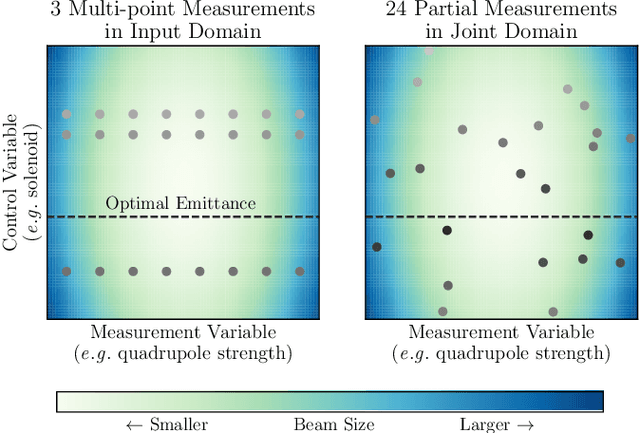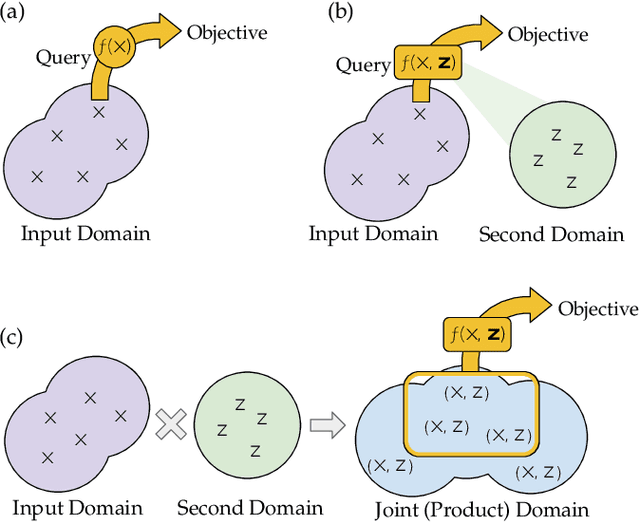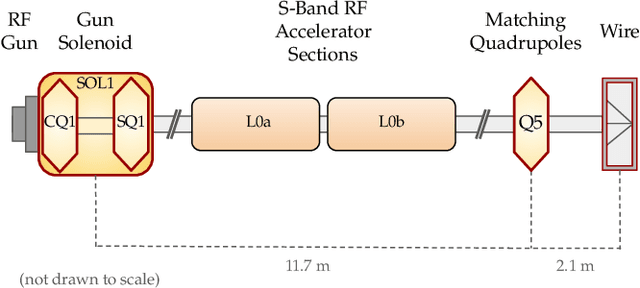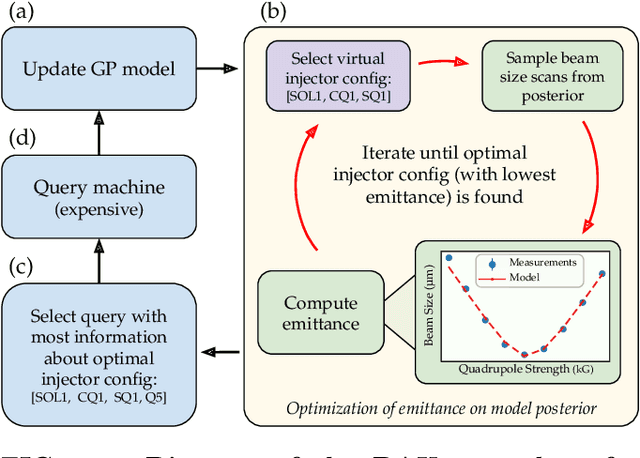Christopher Mayes
Bayesian Algorithm Execution for Tuning Particle Accelerator Emittance with Partial Measurements
Sep 10, 2022



Abstract:Traditional black-box optimization methods are inefficient when dealing with multi-point measurement, i.e. when each query in the control domain requires a set of measurements in a secondary domain to calculate the objective. In particle accelerators, emittance tuning from quadrupole scans is an example of optimization with multi-point measurements. Although the emittance is a critical parameter for the performance of high-brightness machines, including X-ray lasers and linear colliders, comprehensive optimization is often limited by the time required for tuning. Here, we extend the recently-proposed Bayesian Algorithm Execution (BAX) to the task of optimization with multi-point measurements. BAX achieves sample-efficiency by selecting and modeling individual points in the joint control-measurement domain. We apply BAX to emittance minimization at the Linac Coherent Light Source (LCLS) and the Facility for Advanced Accelerator Experimental Tests II (FACET-II) particle accelerators. In an LCLS simulation environment, we show that BAX delivers a 20x increase in efficiency while also being more robust to noise compared to traditional optimization methods. Additionally, we ran BAX live at both LCLS and FACET-II, matching the hand-tuned emittance at FACET-II and achieving an optimal emittance that was 24% lower than that obtained by hand-tuning at LCLS. We anticipate that our approach can readily be adapted to other types of optimization problems involving multi-point measurements commonly found in scientific instruments.
Neural Network Solver for Coherent Synchrotron Radiation Wakefield Calculations in Accelerator-based Charged Particle Beams
Mar 14, 2022



Abstract:Particle accelerators support a wide array of scientific, industrial, and medical applications. To meet the needs of these applications, accelerator physicists rely heavily on detailed simulations of the complicated particle beam dynamics through the accelerator. One of the most computationally expensive and difficult-to-model effects is the impact of Coherent Synchrotron Radiation (CSR). As a beam travels through a curved trajectory (e.g. due to a bending magnet), it emits radiation that in turn interacts with the rest of the beam. At each step through the trajectory, the electromagnetic field introduced by CSR (called the CSR wakefield) needs to computed and used when calculating the updates to the positions and momenta of every particle in the beam. CSR is one of the major drivers of growth in the beam emittance, which is a key metric of beam quality that is critical in many applications. The CSR wakefield is very computationally intensive to compute with traditional electromagnetic solvers, and this is a major limitation in accurately simulating accelerators. Here, we demonstrate a new approach for the CSR wakefield computation using a neural network solver structured in a way that is readily generalizable to new setups. We validate its performance by adding it to a standard beam tracking test problem and show a ten-fold speedup along with high accuracy.
 Add to Chrome
Add to Chrome Add to Firefox
Add to Firefox Add to Edge
Add to Edge